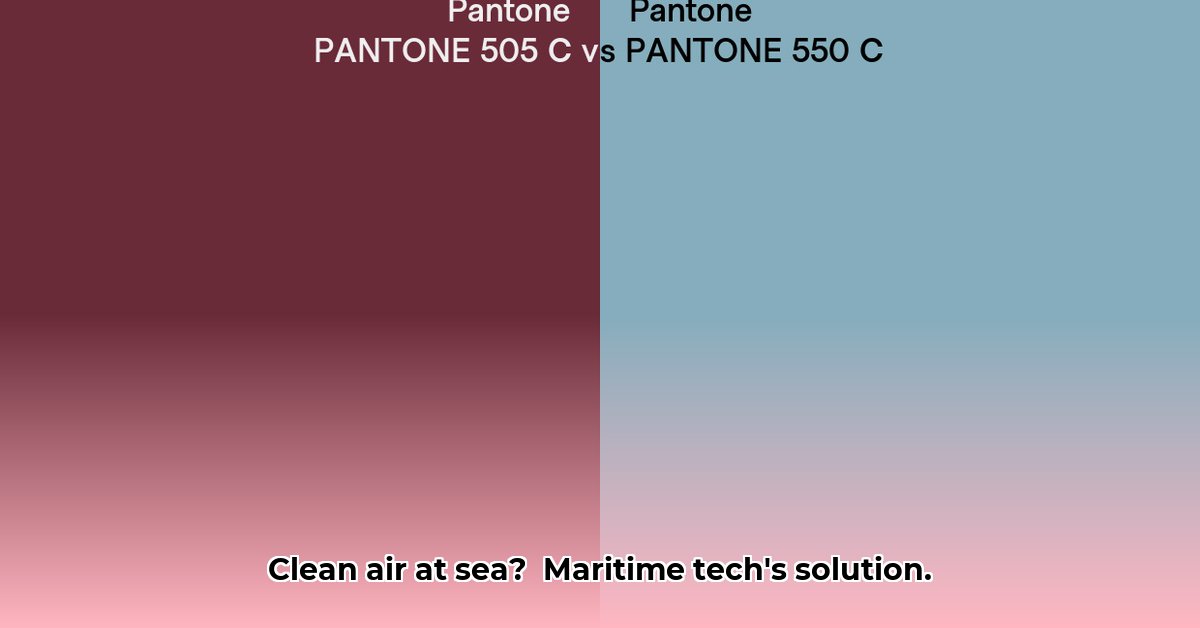
PM2.5 505: Cleaning Up the Air Around Our Ports
Our ports, vital arteries of global trade, often suffer from poor air quality. The culprit? Shipping emissions, particularly PM2.5 (particulate matter with a diameter of 2.5 micrometers or less), known for its adverse effects on human health and the environment. The PM2.5 505 standard sets emission limits, and exceeding them necessitates urgent action. But how can we make our shipping lanes cleaner?
The Problem: Ships and Smog
Older vessels, in particular, release significant amounts of PM2.5 from engine exhaust and cargo handling activities. This pollution disproportionately affects coastal communities, impacting the health of millions. But the challenge extends beyond just the visible black smoke—the less noticeable pollutants are equally problematic. Isn't it time we addressed this persistent issue impacting public health and the environment?
Solutions on the Horizon: A Cleaner Shipping Future
Fortunately, the tide is turning. New engine technologies significantly reduce PM2.5 emissions. Fuel additives offer another pathway to cleaner operations, effectively reducing particulate matter from existing engines. Innovative cargo-handling techniques, such as dust suppression systems, further contribute to cleaner operations. These technological advancements are crucial for achieving meaningful reductions in PM2.5 emissions from the maritime sector. But are these enough, or do we need a more holistic approach to environmental protection?
Making it Happen: Monitoring and Maintenance
Achieving PM2.5 505 compliance requires continuous monitoring and diligent maintenance. Real-time air quality sensors on ships and at port facilities provide valuable data, enabling prompt responses to emission spikes. Regular engine maintenance optimizes performance and minimizes emissions, leading to long-term environmental benefits. Does this proactive approach ensure sufficient reductions, or are there additional improvements needed?
The Power of Data: Predicting and Preventing Pollution
Data analytics play a crucial role in proactive pollution management. By analyzing data from shipboard sensors and port facilities, we can identify pollution patterns and develop predictive models, forecasting peak emission periods. This allows for preemptive measures, such as rerouting ships or adjusting schedules, to minimize pollution impact. Think of it as predictive policing for environmental protection. Can this approach effectively anticipate and mitigate disruptions to air quality?
Working Together: Regulations and Global Cooperation
Harmonized international standards create a level playing field and encourage cleaner shipping practices worldwide. Stronger, consistently enforced regulations incentivize the adoption of cleaner technologies and penalize non-compliance. This collaborative effort is essential for global progress toward better air quality. How crucial is global cooperation in achieving sustainable reductions in maritime emissions?
Looking Ahead: A Brighter (and Cleaner) Future for Shipping
The future of shipping is undeniably cleaner. This transition requires a concerted effort across stakeholders – from technological innovation to regulations and global collaboration. Meeting PM2.5 505 is not merely about compliance, but also about creating healthier communities and protecting our environment. This combined approach is critical for the sustainable growth of the maritime sector.
How to Mitigate Cybersecurity Risks in Autonomous Maritime Navigation Systems
Autonomous navigation offers potential for cleaner air, but raises significant cybersecurity concerns. The interconnected systems of autonomous ships create numerous vulnerabilities that require comprehensive mitigation.
Understanding the Threat Landscape
Autonomous vessels rely on complex networks; a single weak link can compromise the entire system. Cyberattacks could disrupt navigation, damage equipment, breach data, and even cause physical harm. The potential for severe consequences underscores the importance of robust cybersecurity measures. How effective are current cybersecurity strategies in safeguarding these sophisticated systems?
Key Vulnerabilities
Several critical areas need focused attention:
- Communication Systems: Satellite links and radio communications must be secured against unauthorized access and data manipulation. Robust encryption and authentication are critical.
- Autonomous Navigation Systems (ANS): The core ANS is a prime target. Multi-layered security, including independent verification systems, are crucial to safeguard against manipulation.
- Shore Control Centres (SCC): These centers require robust firewalls, access controls, and intrusion detection systems.
- Operational Technology (OT) Systems: OT systems often lack inherent security. Security must be integrated in the design and implementation of these systems.
Mitigation Strategies: A Multi-Layered Approach
A layered defense-in-depth approach is essential:
- Regular Risk Assessments: Continuous identification and prioritization of vulnerabilities.
- Robust Access Control: Strict control over system access and user permissions.
- Data Encryption: Secure data transmission and storage.
- Intrusion Detection and Prevention Systems: Monitoring network traffic for suspicious activity.
- Regular Software Updates: Consistent patching of vulnerabilities.
- Employee Training: Educating personnel about cybersecurity threats.
- Incident Response Planning: Detailed procedures for handling cybersecurity incidents.
- Security-by-Design: Integrating cybersecurity into the design phase.
- Collaboration and Information Sharing: Sharing threat intelligence within the industry.
- Compliance: Adherence to relevant regulations, such as IMO's MSC.428(98).
Regulatory Considerations
International and regional regulations set cybersecurity standards. Compliance is vital for safe and responsible operation. Staying abreast of the evolving regulatory landscape is crucial for autonomous shipping.
Key Takeaways:
- Autonomous ships require a comprehensive, multi-layered cybersecurity strategy.
- Proactive measures and robust security technologies are essential.
- Regulatory compliance is paramount for responsible operation.
- Collaboration and information sharing strengthen collective security within the industry.